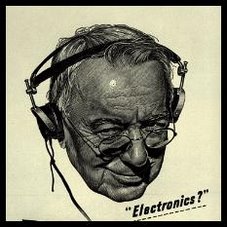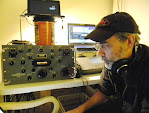
Photo from the-gadgeteer.com
I'll admit up front that I'm a gadget hound. I also love DXing. Over the years I have adopted a number of new technologies, from hard-disk recording to computer logging programs, in order to make the time I spend listening to the radio more efficient. Until now, though, I haven't had much luck in resolving this love for technology with the fact that I still prefer to use pen and paper to keep track of what I hear. I have a dozen paper notebooks containing over 30 years of loggings from both home and remote DXpeditions, and it's always fun to page through those paper-based records and relive the time spent listening to interesting DX catches.
The latest technology to catch my eye was the LiveScribe Pulse “smartpen”. The Pulse is a computer embedded in a pen-sized package that records both what you write and what you hear at the same time. Using a small sensor in the tip of the pen, the Pulse records whatever text or graphics you write in ink on their specially encoded paper while simultaneously recording audio from an internal microphone or stereo mics embedded in the earbuds of the included headphones. The pen links the writing and audio together in its internal memory, allowing you to then play back the audio from any point in time by simply tapping the page where you were writing. You can also upload the contents of the pen's memory to your computer, viewing your notes digitally on-screen and playing back the audio that was captured by clicking on the text. The pen is targeted at students and people who take notes in meetings, situations where having the original audio source can be a useful augmentation to handwritten notes. This capability seemed like it could also be useful for a DXer, so when I saw an open-box Pulse for half-price at my local Target store I decided to try it out.
To test the pen, I conducted a listening session where I took notes in real time as I listened to the radio at local sunrise. In order to capture the audio, I first inserted the pen's microphone/earbuds in my ears then wore my headphones (AKG 240 over-the-ear model) over top of the earbuds; in this way, the pen would recorded everything I was hearing. There was no noticeable degradation to the sound by wearing both headphones together, and it was not uncomfortable having both on at the same time. I started the pen's recording mode by touching the “Record” icon printed on the bottom of the notebook page with the pen tip. Then I wrote the date and time at the top of the page (see picture). As I listened, I jotted down notes about what I heard (such as frequency, full or partial call signs, and any program details) as I would normally do when logging my receptions. After about 15 minutes of listening, I tapped the “Stop” icon at the bottom of the notebook's page. The pen gives an audible “beep” when it starts and stops recording, letting you know it's operating. It also features a small LED screen that shows the length of time into the recording.
To play back what I had heard, all I needed to do was tap the notebook page at the spot where I wrote the note – for example, when I tapped “CFCO ID” on the page, the pen played back the audio of the ID I heard at the time I wrote it down. Amazing! After several minutes of tapping on the notebook page to review my catches, I decided to upload the data to the computer. I slipped the pen into the provided USB dock, it magnetically “clicked” into place, and immediately started to upload the contents to my computer. Once in the laptop, I could review the notes on-screen, and again click any spot on the page to listen to the audio. When playing on-screen, the color of the text changes from light to dark green as the audio advances, showing where the writing matches up with the audio. The software also indicates the elapsed time since start, which is handy for calculating the actual time of a logging.

This early test of the Pulse smartpen has me excited about its potential as a serious tool for logging and archiving of listening notes. I am anxious to see how it performs at our yearly trek to the Long Beach Island DXpedition, where I typically scribble fast and furious for hours at a time while listening to trans-Atlantic and Latin American stations. In the past it's always been a big challenge to match my notes against the recorded audio; with the Pulse, I think it will be a breeze to quickly scan through the recording, checking for missed ID's and making notes for reports.
The Pulse comes in 1 GB and 2 GB models (for 100 or 200 hours of recording time) and is available both on-line at http://www.livescribe.com and at Target department stores. One downside is that you must use their special paper to record your writing; however, their desktop program lets you print out your own paper sheets on a Postscript laser printer. Refill notebooks and pen cartridges are also available on the web and at Target stores.
I'll be anxious to see if the Pulse system catches on in the DX community.








